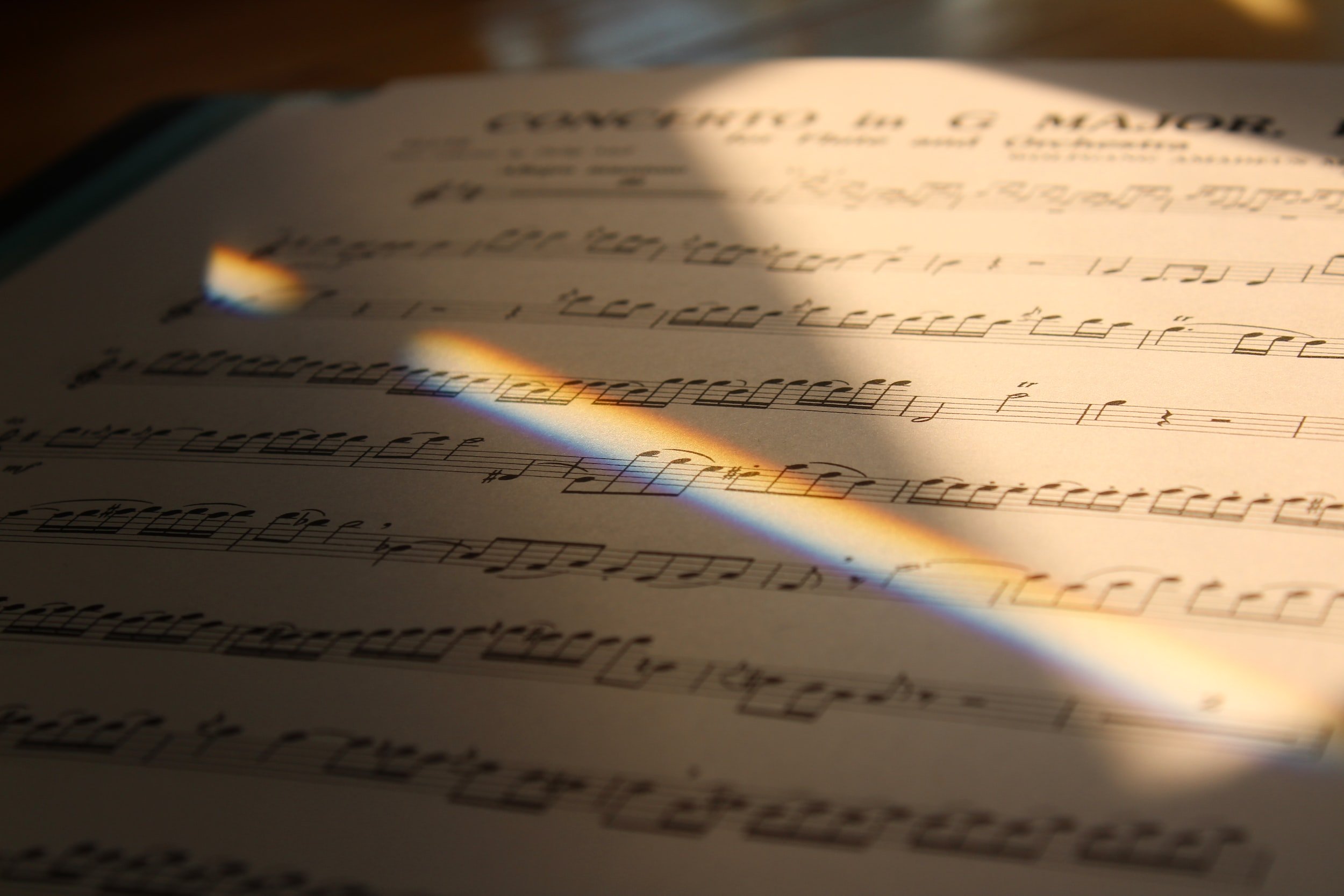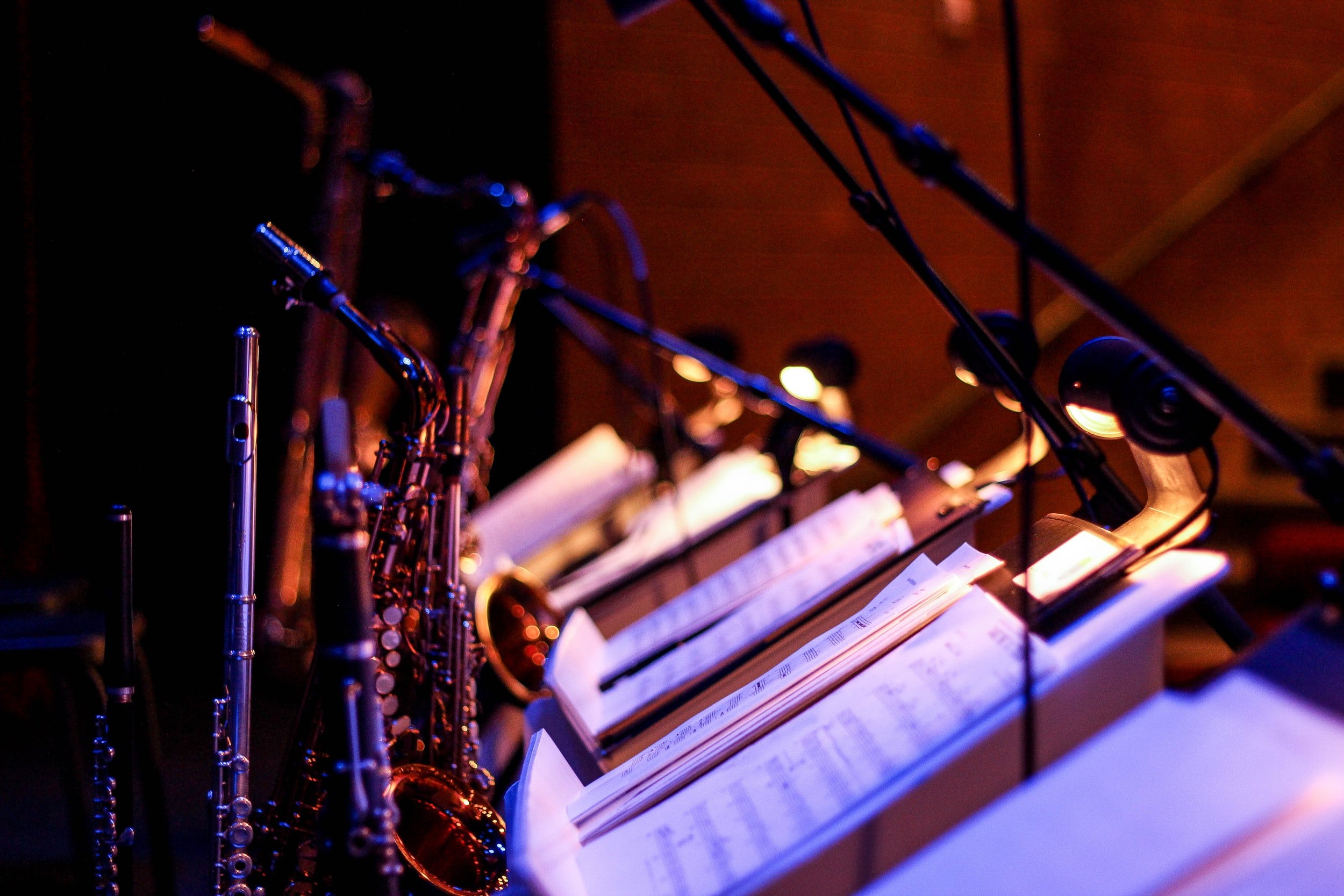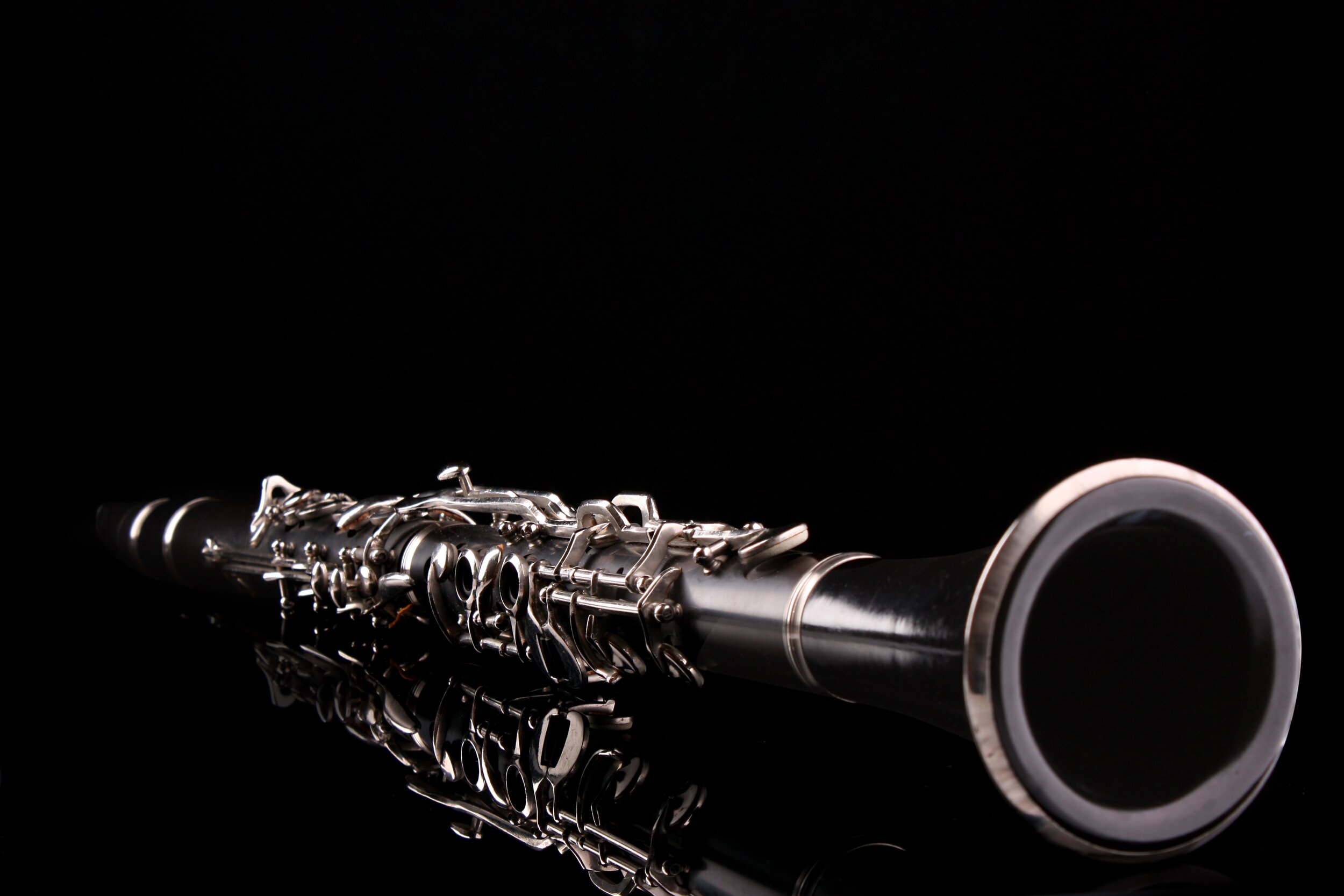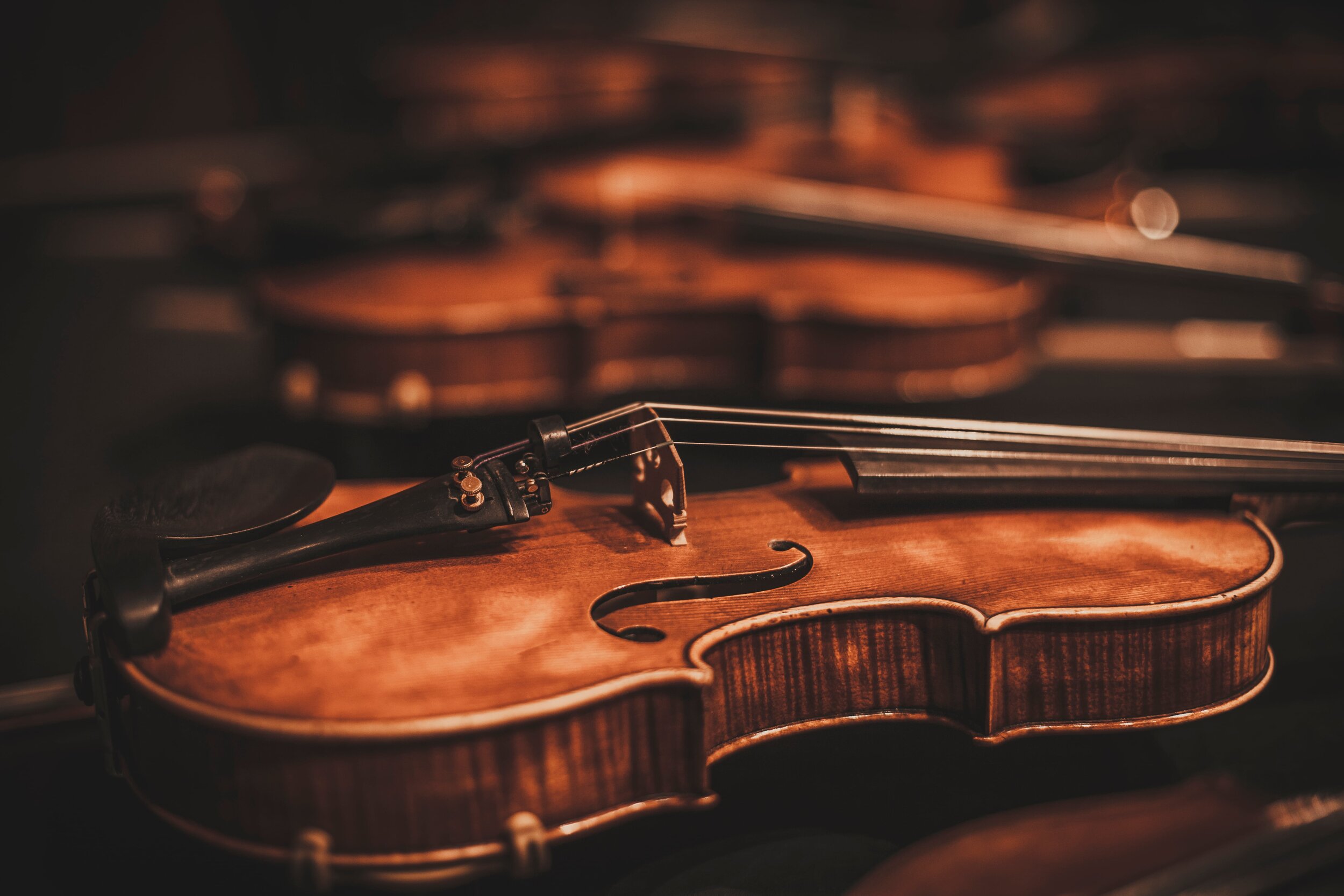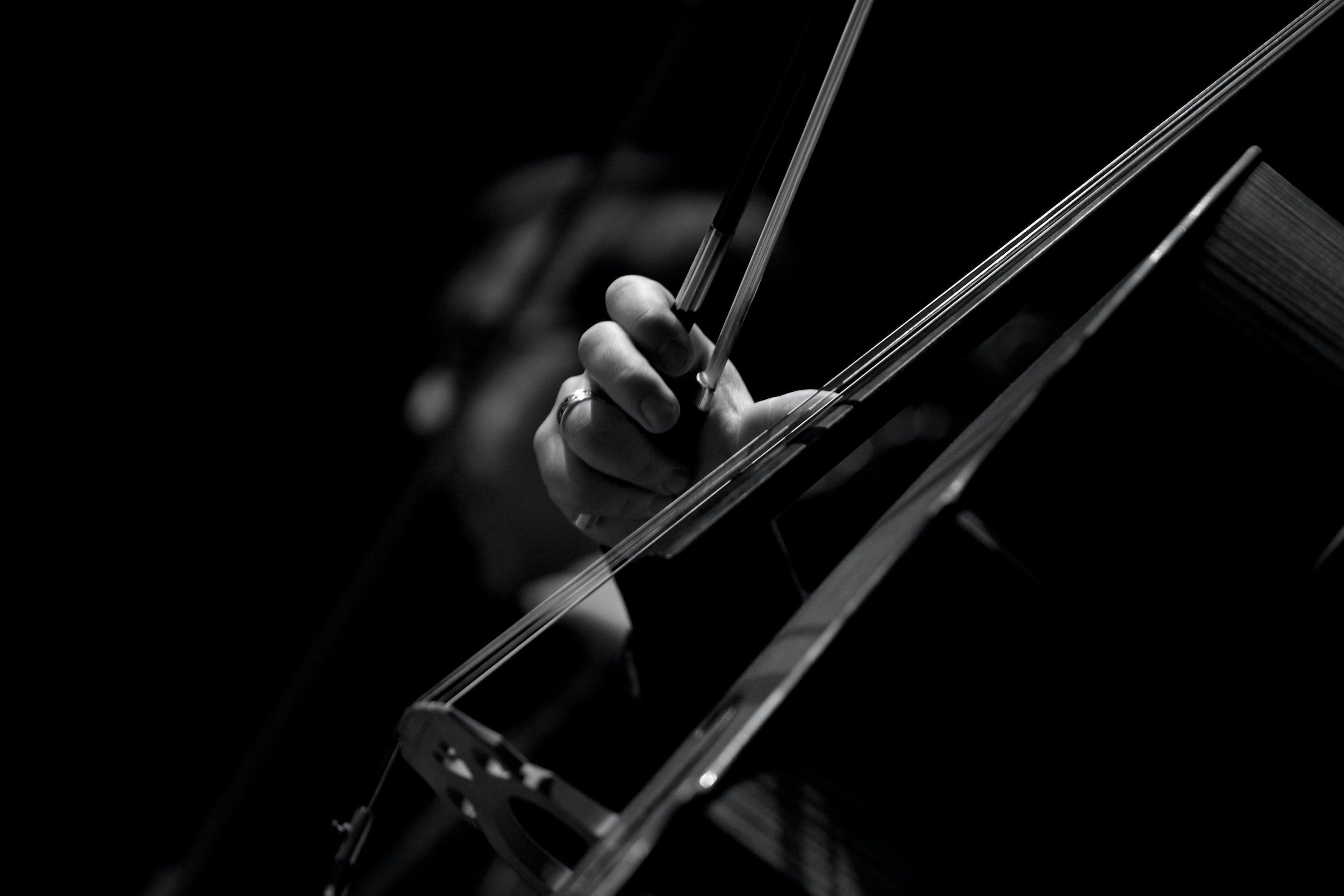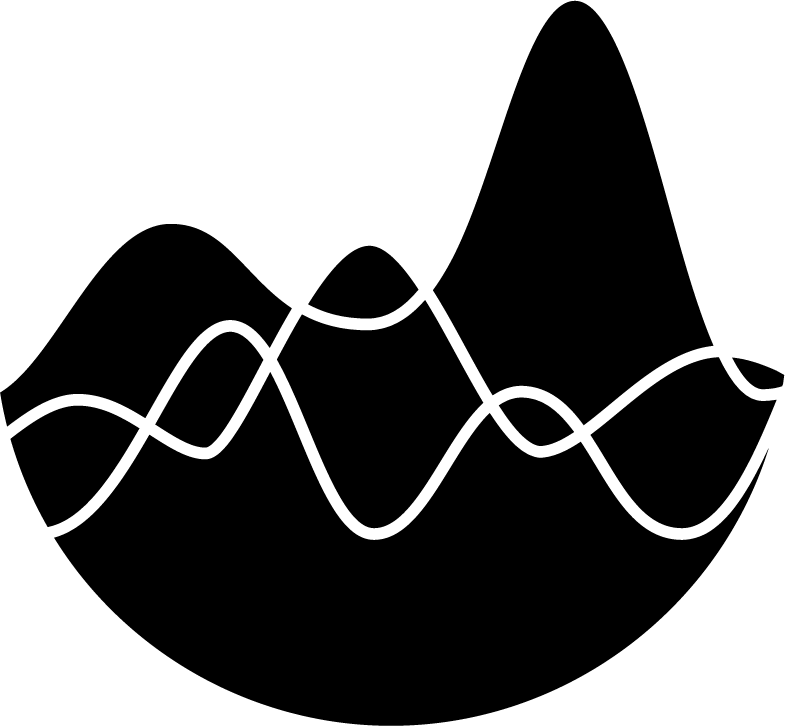Percussion | Other Struck Percussion
Percussion | Other Struck Percussion
Extreme Orchestration
by Don Freund and David CutlerPublished: February 2024
Cymbals
Tam Tam and Gong
Triangle
Cowbells
Metal Plates
Any kind of item, even those not normally found in the percussion section, may be struck (though you may want to take out some extra insurance on particularly fragile items!). The timbre is determined primarily by its material, shape, density, and the type of mallet used. A few are struck against another, similar instrument rather than by a mallet. Most struck percussion instruments are made primarily of metal or wood, though plastics and other hard materials may also be effective.
Cymbals are often used to highlight dramatic moments, supply steady rhythms, provide metallic colors, or create exciting swells through the use of a roll. Some cymbals consist of pairs that strike one another, while others are played with a variety of beaters.
Crash cymbals, also known as hand cymbals, are normally played in pairs. A strap attached to the bell of the cymbal is fastened around each hand. Several playing techniques are possible:
Hit. The most common technique, the two cymbals are thrust into one another. The cymbals are allowed to vibrate until they normally die down, or the next note is played. For loud, sustained hits, the cymbals are held high overhead after crashed.
Choke. As above, the cymbals are crashed, but are immediately damped against the player’s body. Notated by using staccatos or the word “choke.”
Sizzle. One cymbal is rubbed against the other and brought back to vacuum position in a two-part motion, resembling the open and close of a hi-hat. Common marching band technique.
Tremolo. The two cymbals are swished together in a circular motion against one another. This is a special effect and is not used often. Notated with a trill symbol or the word “rubbed.”
Sticked. Occasionally players are asked to hold up one crash cymbal, converting it into a makeshift suspended cymbal, while another percussionist plays it with sticks or other beater. Using this technique it is possible to play rhythmic patterns, single hits, or rolls.
Crash cymbalactually has two meanings. In the jazz and pop worlds, this refers to a common type of suspended cymbal..
A hi-hat is similar to crash cymbals in that there is a set of two cymbals, but they are much smaller. Instead of being held by hand, they are mounted on a rod facing one another. A foot pedal crashes the two together when depressed. If the pedal is immediately released, the cymbals continue to vibrate. When it is clutched down, there is a clean “click” and little sustain. Hi-hat cymbals may also be played with beaters, usually sticks. Any techniques that apply to suspended cymbals can work on the hi-hat, with one added advantage: it is possible to control the sustain and friction against the cymbal with the foot pedal, notated with ‘o’ and ‘+.’ Playing the cymbal with the foot pedal is usually notated towards the bottom of the staff while playing with sticks is shown towards the top.
Finger cymbals are miniature versions of crash cymbals, less than two inches each in diameter, which produce a high-pitched, bell-like ring with little duration. They blend well with other high-pitched instruments, and can be used on single hits as an alternative to triangle or glockenspiel. Usually the edge of the two cymbals hit one another at a ninety-degree angle. Finger cymbal passages played this way should not be exceedingly fast. Less commonly, they are attached to a frame and struck with sticks.
All suspended cymbals (cymbals that are hung from a frame or rack) are manufactured in a variety of sizes, and specifying large, medium, or small is often a good idea. The type of beater considerably alters the tone.
Sticks have the most clear and defined articulations.
Yarn mallets are excellent for smooth rolls and effective for single hits.
Wire brushes produce a lighter, whisper attack. Only possible at softer dynamics.
Triangle beaters and other thin metal objects can be used to scrape the cymbal, creating a swishing sound. They can also perform single hits at softer dynamics.
Bass bows can be drawn against the rim of the cymbal, evoking an eerie, ethereal squeak with many overtones. This is most effective on larger cymbals—a very strange sound emerges from Chinese cymbals when bowed.
Several types of suspended cymbals are common to the contemporary orchestra. The most common type, simply called a suspended cymbal, produces a crashing sound when struck on the edge, a more focused, clearly articulated ping when hit on the bell, and a somewhat resonant ring after striking the bow. Use directions to indicate where the cymbal should be played if it is not obvious; normally the player will play on the edge. Suspended cymbals are ideal for swelling rolls and dramatic hits. More intricate rhythms are possible as well, most effective on the bow or bell.
Ride cymbals, common to jazz and popular music, are effective for extended rhythmic patterns but do not have the sustain or crash of a normal suspended cymbal. Large ride cymbals are effective for bowing or scraping. A number of rivets are drilled into sizzle cymbals. After the cymbal is struck, the rivets bounce up and down against the bow of the cymbal, creating a hissing or sizzling effect. Draping a succession of interlinked paper clips over the cymbal, or taping several coins onto the surface produces similar results. Splash cymbals are small and thin, making a dramtic but flimsy crash, with little sustain. Splash cymbals are often choked, and are best for isolated hits. Chinese cymbals have an intense, high-pitched, tam-tam like quality with a relatively short sustain. Usually employed at loud dynamics, it has a strong attack, sounding something like “kksshhhh.” Many other varieties and sub-varieties of cymbals exist, ranging from China splashes to triple cymbal hi-hats, so consult with players to see what is available.
Chinese cymbals are commonly called China-boys in jazz and popular settings.
You may recall the infamous television program “The Gong Show,” in which an act of entertainment that did not meet the approval of judges was interrupted by the crash of a gong. The only problem is that the struck instrument was actually a Tam-Tam (though, in all fairness, “The Tam-Tam Show” doesn’t sound as poetic.) The general consensus for differentiating tamtams and gongs is that gongs are pitched instruments, with a button or nipple allowing for a discernable fundamental pitch, while tam-tams are unpitched, more closely resembling an oversized cymbal in timbre.
There are many types of gongs spanning many octaves, but most organizations do not own extensive gongs collections. Smaller, higher gongs are sometimes rented in chromatic octave sets, but lower gongs can be quite expensive, often costing hundreds of dollars to rent just one. Gongs are interesting and unusual timbres for highlighting individual pitches or playing exotic sounding melodic passages.
Tam-tams also come in a wide variety of sizes. Specifications such as “tiny,” “medium,” “large,” or “very large” are usually enough—the organization will do the best to locate an appropriate instrument with the resources at hand. Large tam-tams can easily sustain for over thirty seconds, and though it is possible to damp these instruments with the hands, it may take several seconds to completely silence a loudly vibrating instrument. They are often used at pivotal moments when transitioning from one type of material to another, and can be effective when doubled with bass drum. Soft hits or rolls create a sense of mystique. Tam-tams can be struck in a variety of locations for contrasting colors, and produce wonderful scraped or bowed special effects.
A water gong is neither a specific instrument nor a gong. Instead, it is a tam-tam that is dipped into a bucket of water. After being struck, the pitch drops as the tam-tam is slowly submerged in water. Large tam-tams should not be used for this effect since they can be quite heavy.
For many, triangles conjure images of being called for supper. Bent metal rods, not surprisingly in the shape of a triangle, resemble a high-pitched bell when struck. The size of the triangle and triangle beater play a strong role in the weight and resonance of the sound. A piece of string or fishing line, looped around the bar, is attached to a clip that is either suspended or held in the hand. When hand-gripped it is possible to quickly switch between muted and unmuted sounds by lightly touching the instrument with a finger, a favorite technique for executing repeated rhythms in Brazilian Bossa-Novas. Single hits, flams, drags, and rolls (executed by quickly alternating strikes between two adjacent corners) are capable of adding brilliance to ensemble passages.
Cowbells have a more hollow, “clanging” sound than many comparably sized metals. They are non-pitched and are often written for in sets of two or three. It is possible to roll a cowbell with a single stick by moving around the instrument’s opening in addition to the normal two-stick method. Players can quickly switch between the two bells of the African instrument agogo bells, consisting of two different sized ice cream cone shaped cowbells attached to a bent rod, most common for repeated rhythms.
A variety of metal objects may be struck to produce a sharp, percussive attack. Actual brake drums from automobiles have found their way into the concert hall. A hammer striking a brake drum resounds a clear, loud, bell-like tone. Though it is often possible to discern an actual pitch, brake drums are often obtained from a junkyard, and trying to locate a desired frequency is unrealistic. Instead, these instruments should be treated as non-pitched percussion. It is possible, however, to specify the size of the brake drum, and sets of three to five are commonly required.
These instruments are effective for single notes, active rhythms, or rolls. A related sound can be made by striking other metal objects. Suspended metal plates and metal coils project a slightly more resonant ring. It is possible to simulate the sound of a blacksmith’s anvil by hitting a steel or iron bar with a metal hammer. In some cases, an actual anvil is used. Though some composers have treated this instrument as pitched percussion, it is difficult to obtain desired pitches. Any other metal object can be struck.
Caution! Though sticks and brass mallets sound effective when striking brake drums or anvils, the beaters can be quickly ruined. Except when these instruments must be used in conjunction with other instruments, hammers should be used.
Woodblocks are rectangular blocks of wood. Two slits are normally cut into the block, acting as resonating chambers, and allowing a different “pitch” to be produced depending on which side is struck. However, only the face up side is hit; just one pitch is available at a given time. Producing a dry and crisp pop with little sustain, woodblocks have been used to evoke the sound of early jazz or galloping horseshoes. (You may recall LeRoy Anderson’s Sleigh Ride, famous for its use of woodblocks imitating the sound of horses’ hoofs striking the ground.) An isolated “clop,” coupled with a chord from the ensemble adds a pungent and focused accent. Rolls are also common. Woodblocks may be called for individually, but sets of two, three, or more are common.
Temple blocks usually come in mounted sets of five, and suggest Oriental influence on a number of levels. Although they are treated as non-pitched percussion, the five hollow blocks are roughly tuned to a pentatonic scale. Most often they are wooden and shaped like a dragon’s head, a common image in Chinese culture (though some modern sets are essentially woodblocks made of plastic). Their unique shape distinguishes their tone from woodblocks, sounding more rounded with a slightly longer sustain. All of the techniques for woodblocks are possible on temple blocks. It is possible to perform a roll between two separate blocks, or even more when holding multiple mallets in each hand.
Instrument Studies for Eyes and Ears (ISFEE) | Woods & Others
The drum set, also known as trap set, is actually a collection of instruments that are assembled in such a way that it is possible to play many of them together, making drummers the most likely “one-man bands.” Drummers have the advantage of being able to use all four limbs, since the feet operate foot pedals. Drum sets are standard “instruments” in most jazz and popular ensembles, and when they appear in orchestral settings, they are often called upon to emulate one of these styles. Players sit on a stool, known as a drum throne, with the instruments conveniently positioned for easy access. For drum set notation, see page __. Drum sets usually consist of the following:
Snare drum. Gripped by a snare drum stand.
“Kick” drum. Rested on the floor, this bass drum is struck by a foot pedal connected to a beater, controlled by the right foot. Kick drums are almost never hit with a mallet.
Tom toms. Most sets include a low tom and often high and/or middle ones.
Hi-hat. The hi-hat pedal is operated with the left foot, though hi-hats may alternatively be struck with beaters, as discussed previously.
Other cymbals. A suspended crash cymbal, at the very least, is included. Other cymbals may include ride, sizzle, splash, or Chinese varieties (80s rock drummers were notorious for over-decorating their drum set with an extensive but tasteless collection of cymbals thrust high overhead.)
Miscellaneous Percussion. It is not uncommon to add a mounted cowbell, woodblock, or other auxiliary percussion instrument to the drum set when novel effects are desired.












